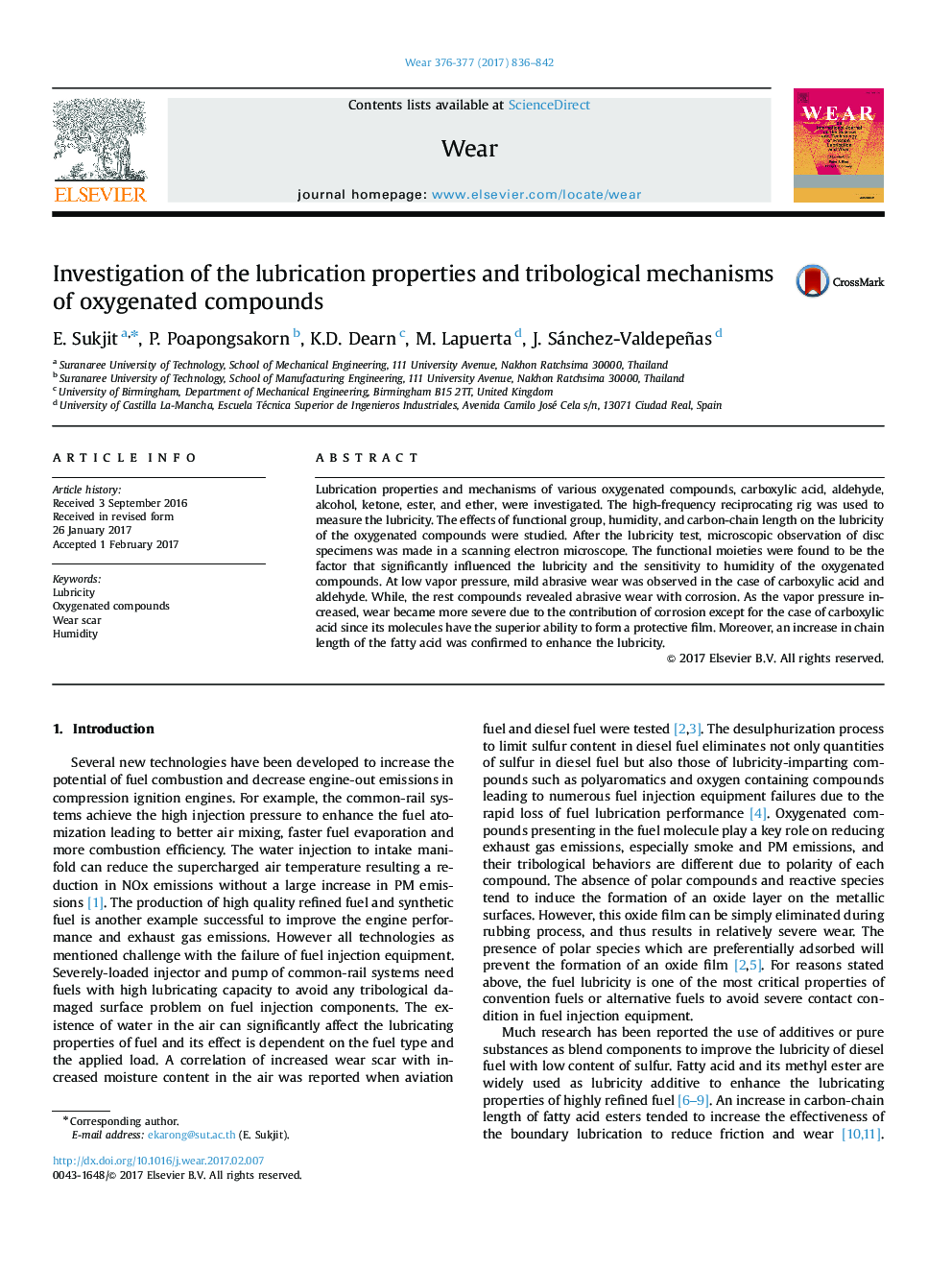| Article ID | Journal | Published Year | Pages | File Type |
|---|---|---|---|---|
| 4986754 | Wear | 2017 | 7 Pages |
Abstract
Lubrication properties and mechanisms of various oxygenated compounds, carboxylic acid, aldehyde, alcohol, ketone, ester, and ether, were investigated. The high-frequency reciprocating rig was used to measure the lubricity. The effects of functional group, humidity, and carbon-chain length on the lubricity of the oxygenated compounds were studied. After the lubricity test, microscopic observation of disc specimens was made in a scanning electron microscope. The functional moieties were found to be the factor that significantly influenced the lubricity and the sensitivity to humidity of the oxygenated compounds. At low vapor pressure, mild abrasive wear was observed in the case of carboxylic acid and aldehyde. While, the rest compounds revealed abrasive wear with corrosion. As the vapor pressure increased, wear became more severe due to the contribution of corrosion except for the case of carboxylic acid since its molecules have the superior ability to form a protective film. Moreover, an increase in chain length of the fatty acid was confirmed to enhance the lubricity.
Related Topics
Physical Sciences and Engineering
Chemical Engineering
Colloid and Surface Chemistry
Authors
E. Sukjit, P. Poapongsakorn, K.D. Dearn, M. Lapuerta, J. Sánchez-Valdepeñas,
